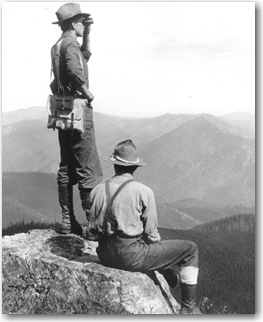On Friday, April 19, 1985, the Pine Barrens of New Jersey were dry. The fire lookout at Cedar Bridge recorded an 18 mph wind and a humidity of 24 percent at 10 a.m.; 58 minutes later he spotted a smoke. Here is an excerpt from an article at the Sentinel about the fire that followed.
…McPherson, now 76, and Talnagi both responded to the firehouse, each manning a famed HFD “Yellowbird” — a four-wheel-drive, military surplus Jeep-like vehicle that was painted yellow and used to fight wildfires.
Driving his Yellowbird, McPherson was accompanied by firefighters Ron “Doc” Wilson and Steve Spack. Kasubinski recalled the McPherson Yellowbird “roaring in” along Old Forge Road.
“They said, ‘We’re not going to let your house burn,’ ” Kasubinski said.
On the other Yellowbird, Talnagi recalled, he and three other firefighters “went to the head of the fire to try to cut it off. However, the wind was pushing the fire very fast.
“I remember driving into the woods, a hundred yards or more in front,” Talnagi said. “As we drove in, we realized the fire was moving faster than anticipated and [we] had to get out and back to the road.”
As the Talnagi Yellowbird retreated, the fire blazed across what had been its path.
The McPherson Yellowbird took a sand road into Palumbo’s Acres.
“We pushed this one tree down [with the Yellowbird], the radiator hose broke, sprayed water all over the engine, drowned it out,” McPherson said. “We radioed for help and nobody knew where we were.”
McPherson, Wilson and Spack wet the area down with the water they had. With the fire approaching, they did the common-sense thing in a wildfire: get to already burned ground.
Despite the fire being into the treetops, they found a spot that was low enough to jump, thanks to the Applegarth Fire Company having been in the area and wetting it down, McPherson said.
As for the McPherson Yellowbird, the fire “destroyed the truck, burned the tires off, warped the frame,” he said.
“The main problem was the lack of water, so pumpers with large tanks and tanker trucks were called in to supply us with water,” Talnagi said.
The fire burned 700 acres and was controlled on April 20. Thanks to the good work of firefighters, a few homes were slightly damaged, but none were destroyed.

